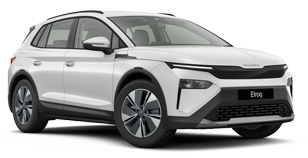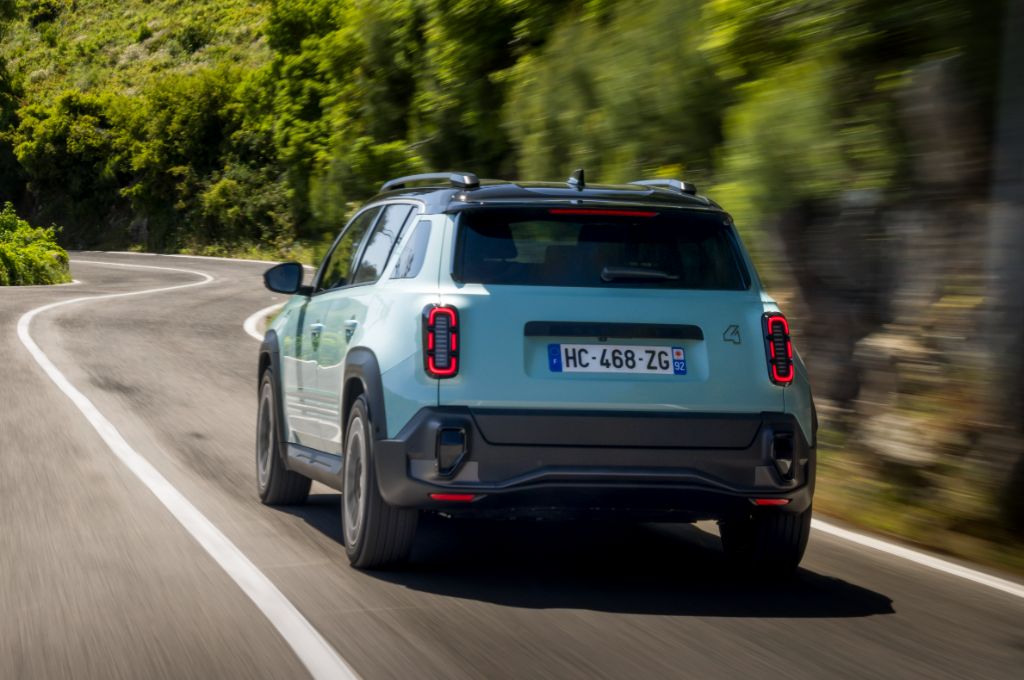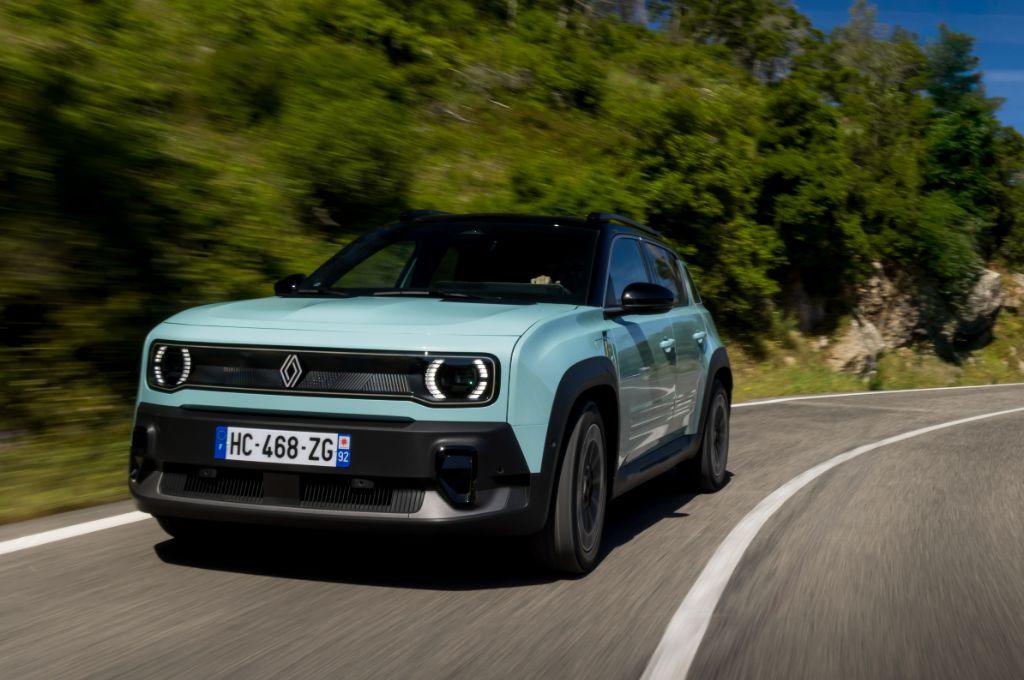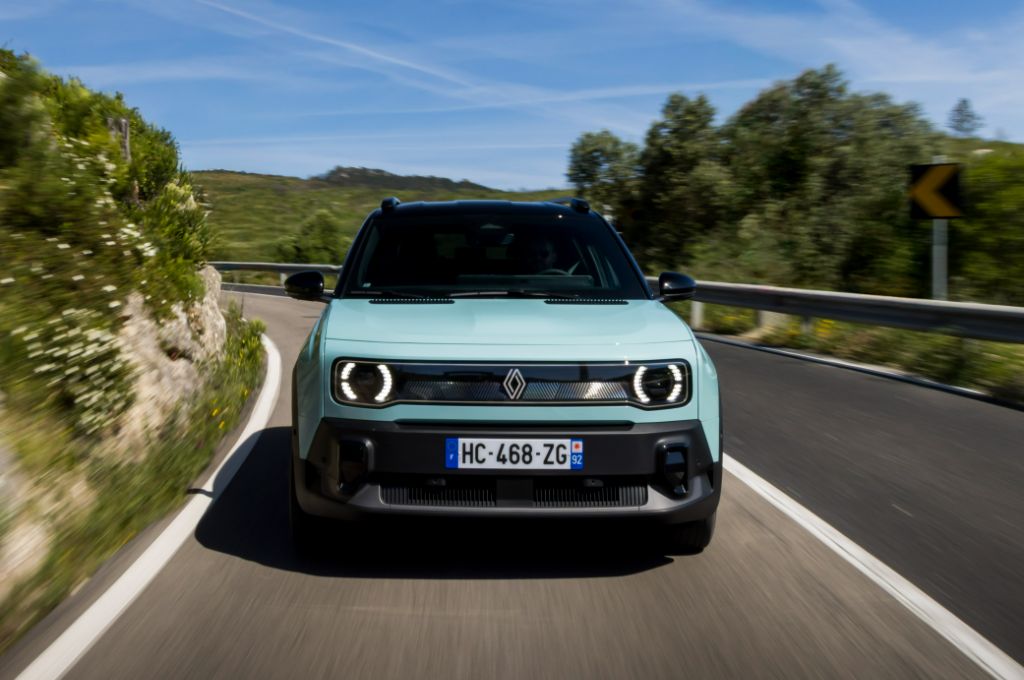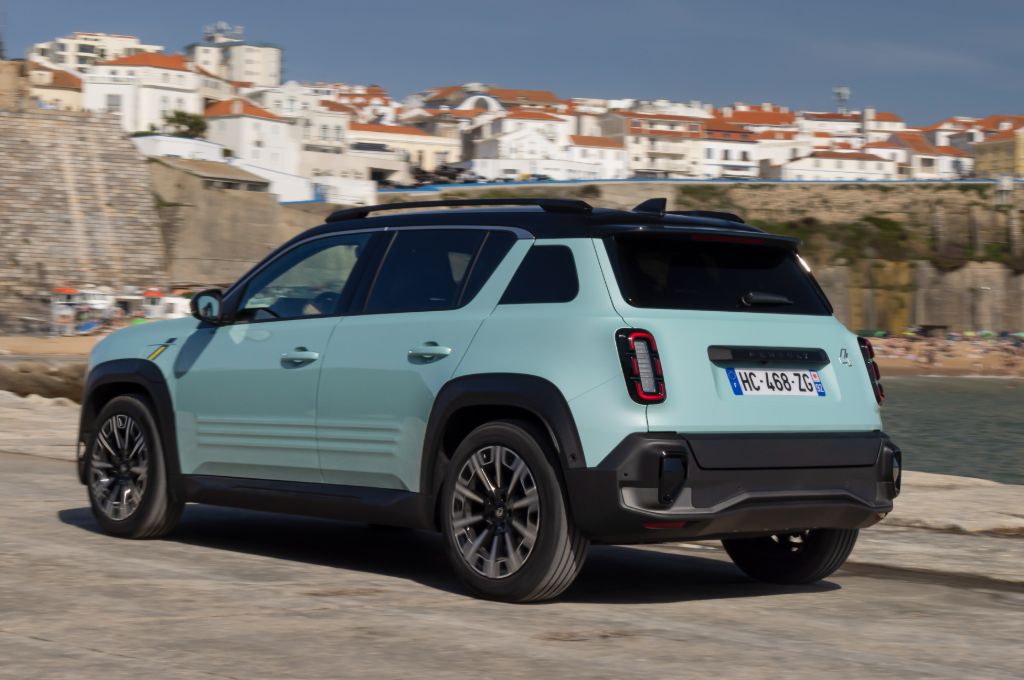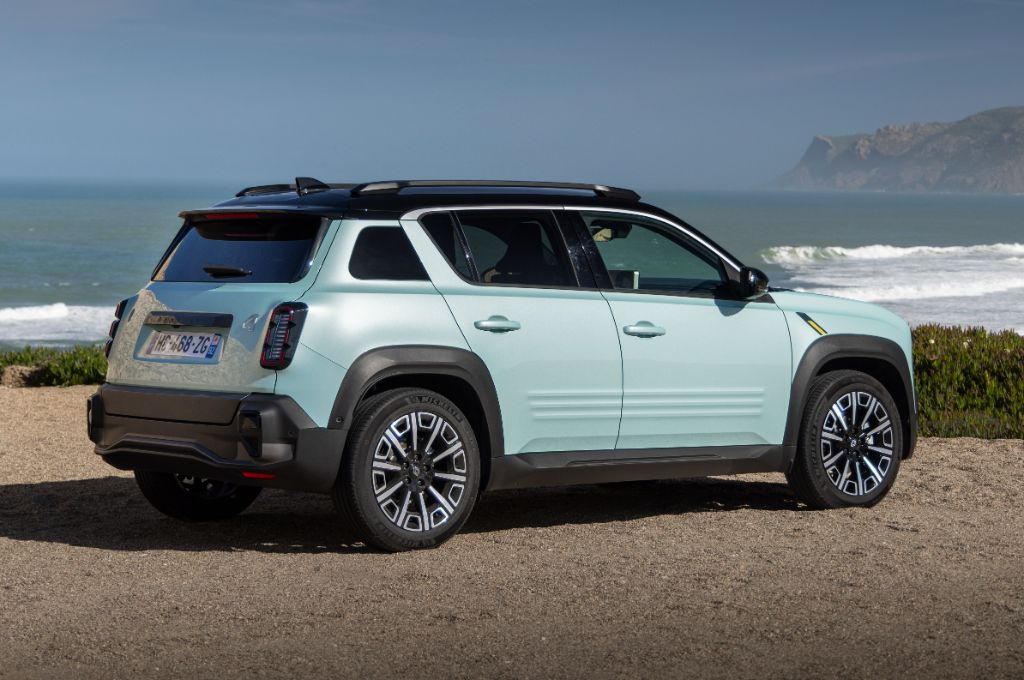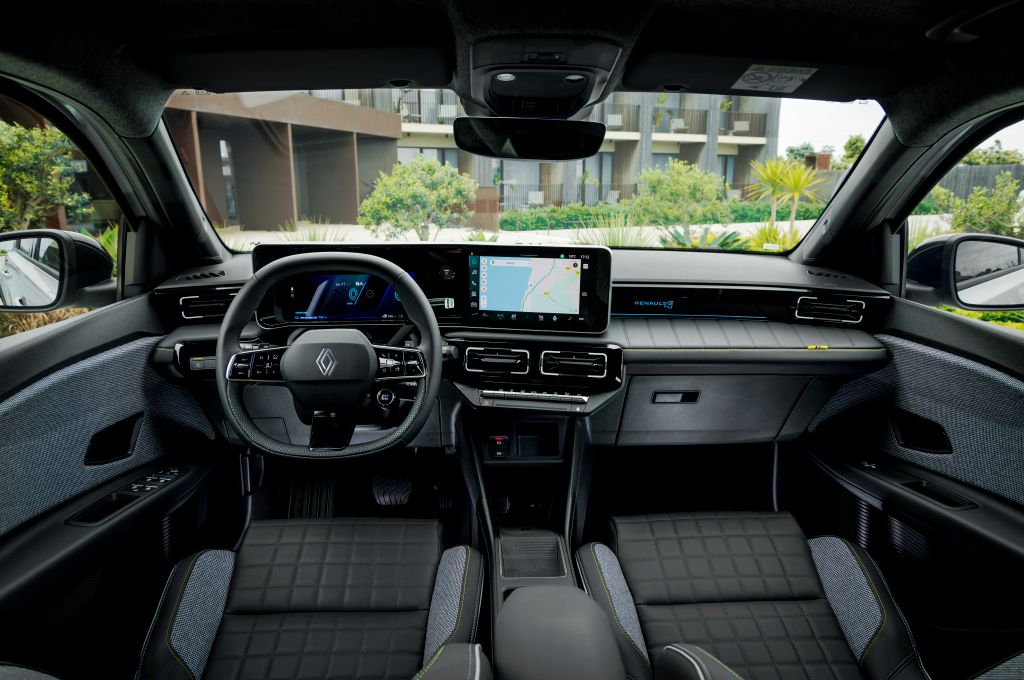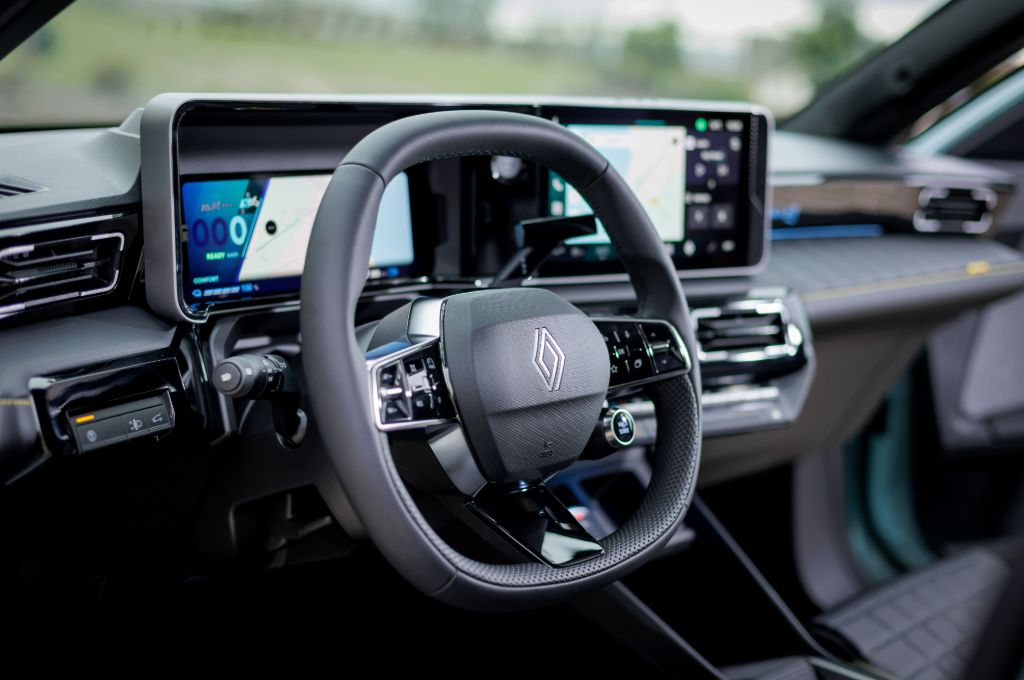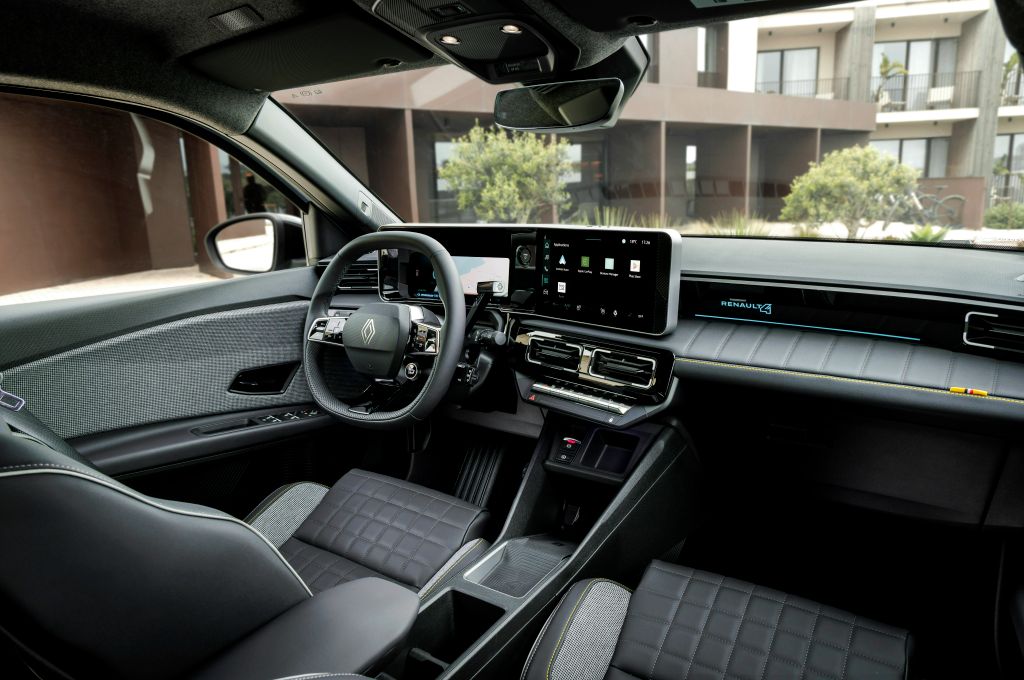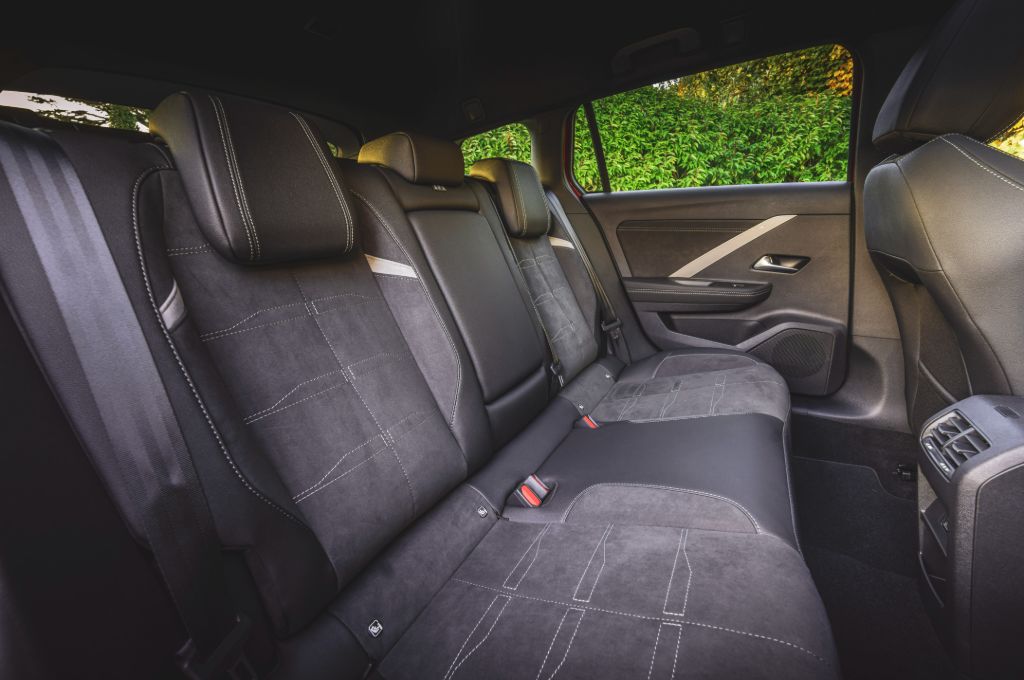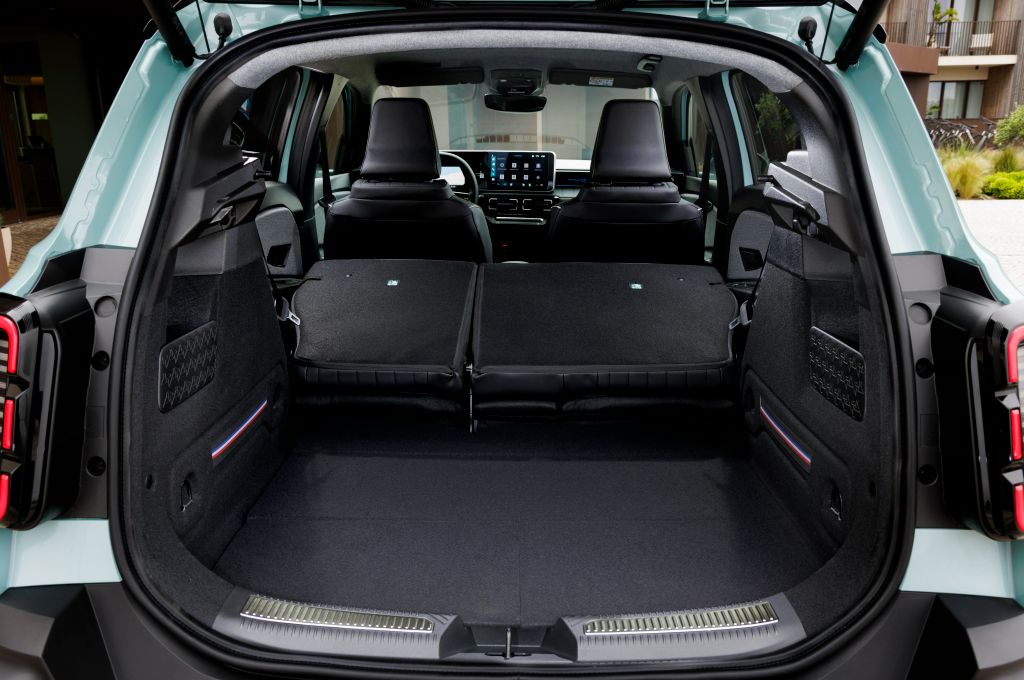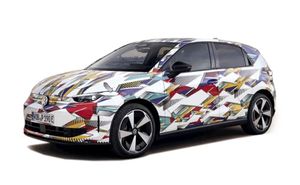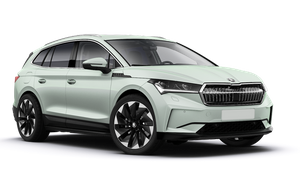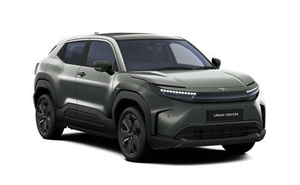Renault 4 – Introduction
The new Renault 4 E-Tech is not without some seriously high expectations. Not only is it straight off the back of the Renault 5’s huge success (it’s an Electrifying award winner, don’t you know...), but it’s also the successor to the original Renault 4, a car that sold over eight million examples around the world over a period of more than 40 years. It’s a part of French culture, and its remake has quite the job to carry some of the original’s no-nonsense charm and joie de vivre into a modern, electric crossover.
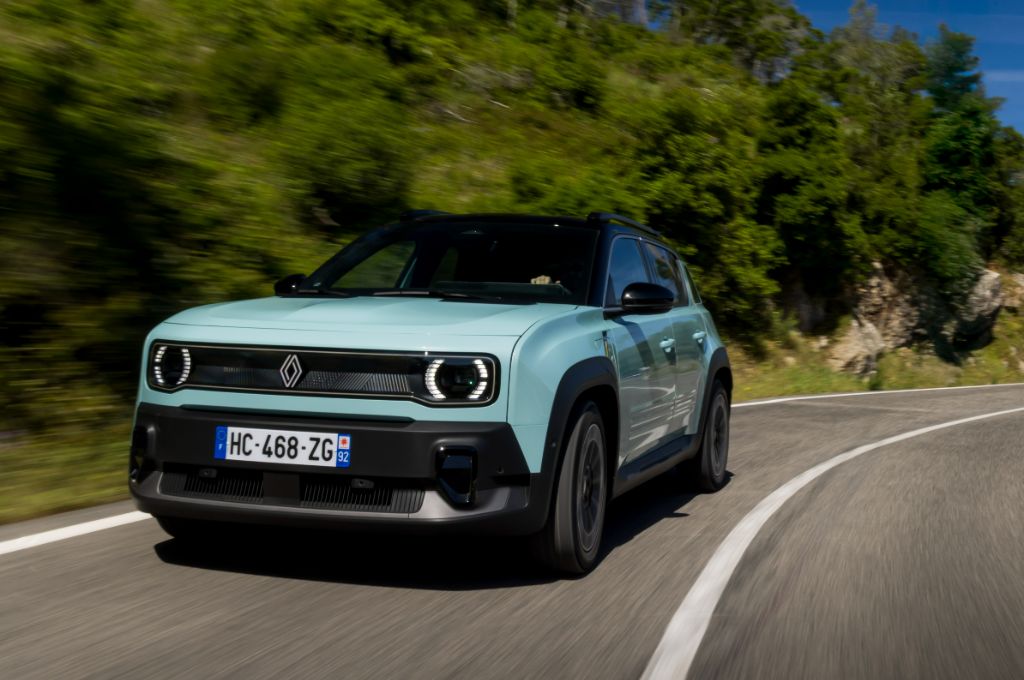
But that’s just what Renault has set out to do, and so we have the new Renault 4 E-Tech, complete with the same underpinnings and powertrain as the Renault 5, but the extended wheelbase and body stretches makes the 4 around 12cm longer than the Renault 5, at 4.14m long. It’s only available as an electric car – there’s no hybrid version – and it’ll be offered with a 52kWh battery delivering a WLTP range of between 241 and 247 miles. Rivals include the Ford Puma Gen-E, Fiat 600e, Citroen e-C3 Aircross, Smart #1 and MG4.
As of late 2025, the Renault 4 became known as the Renault 4+. Don't worry, that little '+' sign doesn't really change anything. It denotes that the battery is sourced from a new plant – Renault's own factory in France, no less. The car's range, and every other aspect of its ownership proposition, stays the same, but the new battery means that it's more environmentally friendly, and that it's eligible for the full electric car grant of £3,750 from the UK government. That's a huge saving, and makes the Renault 4 a great buy.
The prices shown on this review do not include that grant deduction – they're the original, non-discounted list prices. You can find out all about the ECG, and see our up-to-date list of all the cars eligible for the grant, right here.
Range, battery and charging
The Renault 4+ comes with a 52kWh lithium-ion NMC battery that promises between 241 and 247 miles of WLTP range, depending on which trim and wheel size you go for.
A smaller, 40kWh LFP battery is on the cards in Europe but don’t expect it to make it to the UK. Shame, really, as it could have helped hit an even keener price point for urban drivers, and I’m a big fan of shorter range EVs as they’re more environmentally friendly and will still suit lots of motorists who can charge easily and don’t often do long drives. Anyway, that’s the decision for now and I can see why given that demand in the UK is largely for longer range electric cars – especially when they’re a bit more practicality and family focused, like the Renault 4.
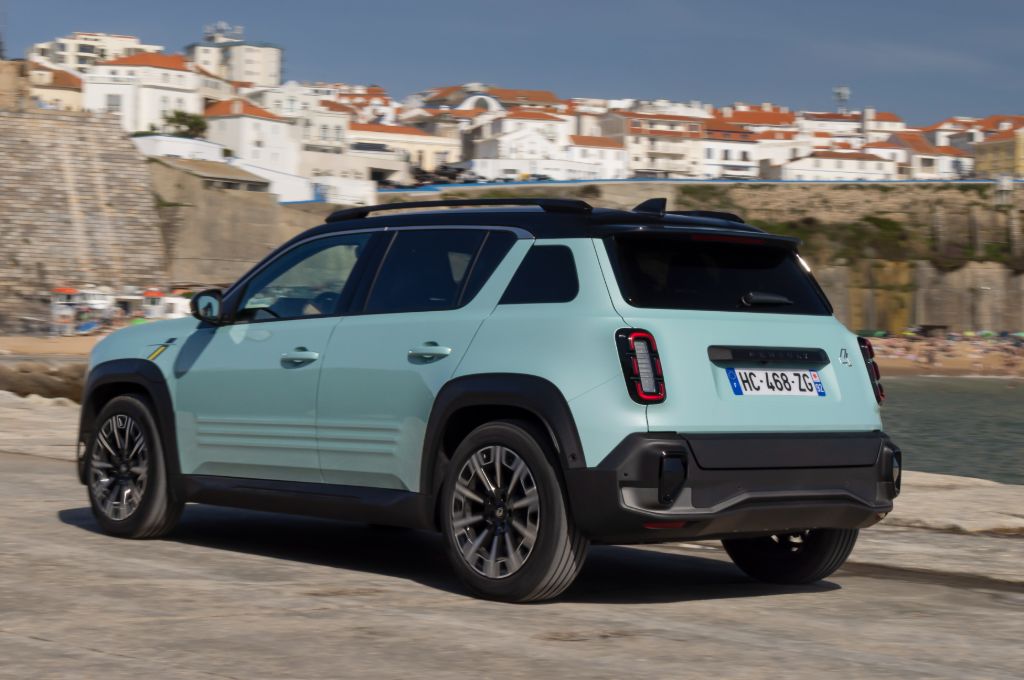
Rapid charging peaks at 100kW, which is competitive with most rivals and will get you a 10–80% top-up in around 35 to 40 minutes. You also get vehicle-to-load (V2L) charging on every Renault 4 E-Tech as standard, which is great as it means you can use the car’s battery to charge any electrical device. Want to plug in a kettle on your camping trip? Now you can! Nice.
A heat pump is also standard on the Renault 4, which will help with cold weather running. We’ve only driven it in fairly moderate conditions and warm weather, when it achieved around 240 miles, which is impressive but should be considered a best case scenario – even in summer, a long motorway run will see that drop to more like 200-ish miles. We’d estimate that real world range will be around 160 to 240 miles depending on conditions and how you’re driving.
Practicality and boot space
Boot space is decent at 420 litres, with a handy 55-litre underfloor section for cables — unless you opt for the Harman Kardon sound system, which replaces that useful underfloor space with a chunky subwoofer that takes up that extra space. Still, the loading lip is very low and the aperture is usefully huge, so loading bigger items will be very easy, and it’s certainly a more useful boot than you get in Fiat 600e and Jeep Avenger – even if the Ford Puma Gen-E manages even more boot space than the Renault. There’s no frunk in the Renault, either, I’m afraid.
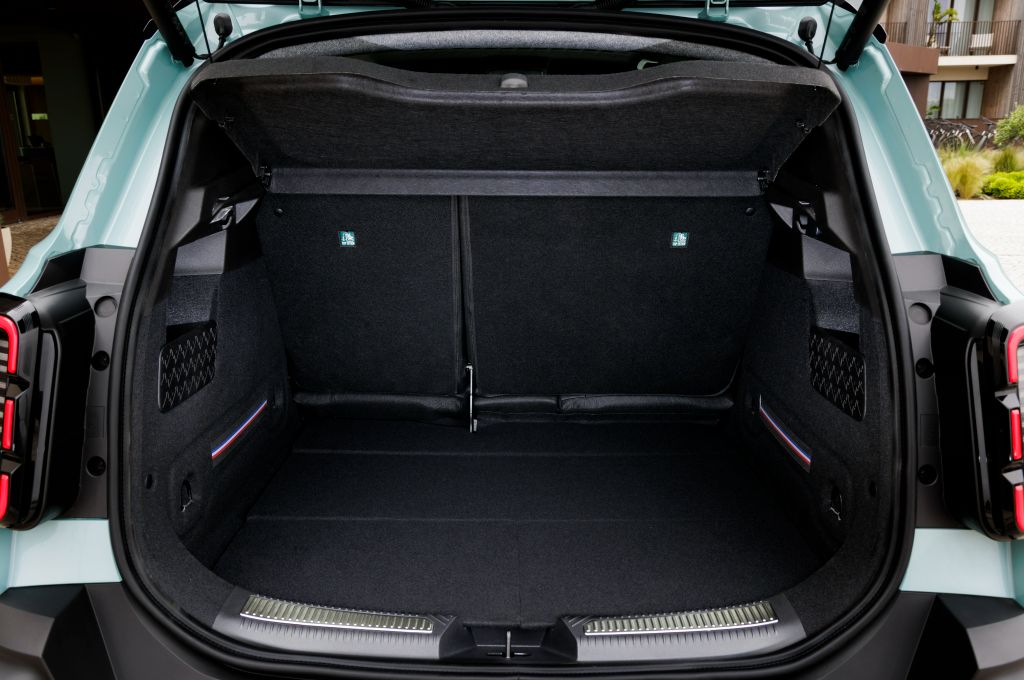
Rear space is a bit of a mixed bag in the Renault 4. An average-sized adult will be able to sit behind another without issue, but tall passengers will be short of legroom, and there’s no foot space beneath the front seats so it feels a bit cramped. There’s no centre armrest, either, but there are a couple of USB-C ports to keep the kids' devices topped up, which earns parental brownie points. The roofline is surprisingly low as you step through the Renault 4’s rear doors, too, so it’s a bit easy to clout your head if you’re not careful.
Basically, by the standards of a very compact electric crossover-hatchback, the Renault’s rear seats are just fine – but they’re not brilliant. A Citroen e-C3 Aircross and Ford Puma Gen-E do a bit better for rear passenger space, I reckon. Don’t discount the Renault, though – if you’ve got chunky car seats or leggy kids to worry about, just make sure that you get to the dealership and try them out in the back seats before you make any decisions.
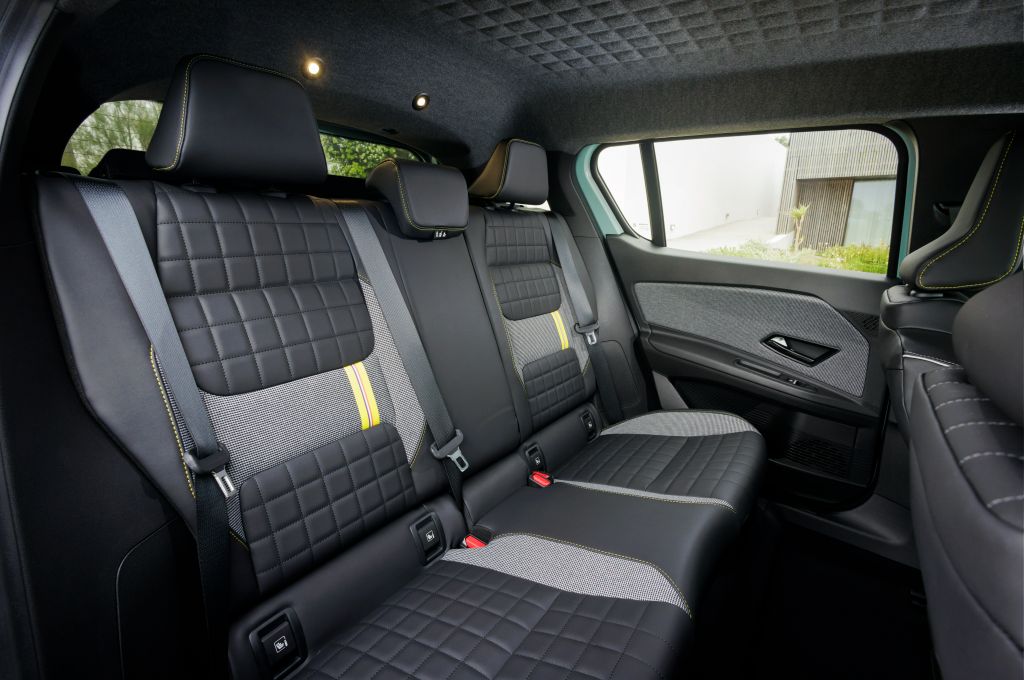
Interior, design/styling and technology
Up front in the Renault 4, it’s charming and well thought out. The seats are comfy and have a decent range of movement, plus there’s electric lumbar adjustment that made a big difference to my creaky back on a fairly long route.
The dash is very similar to the Renault 5’s, which is no bad thing. Cute details like the 4 logo in the storage bins, recycled upholstery (except for top spec trims), flashes of colour and texture around the place – it all feels cute, tactile and generally well put together. It’s certainly more interesting than the interior in a Ford Puma Gen-E or MG4, by a mile.
Tech-wise, every Renault 4 gets a 10.1-inch central touchscreen with built-in Google Maps, plus wireless Apple CarPlay and Android Auto. Physical climate control switches are a great feature, and I also love that you can dim the screen easily at night in only a couple of swipes on the screen.
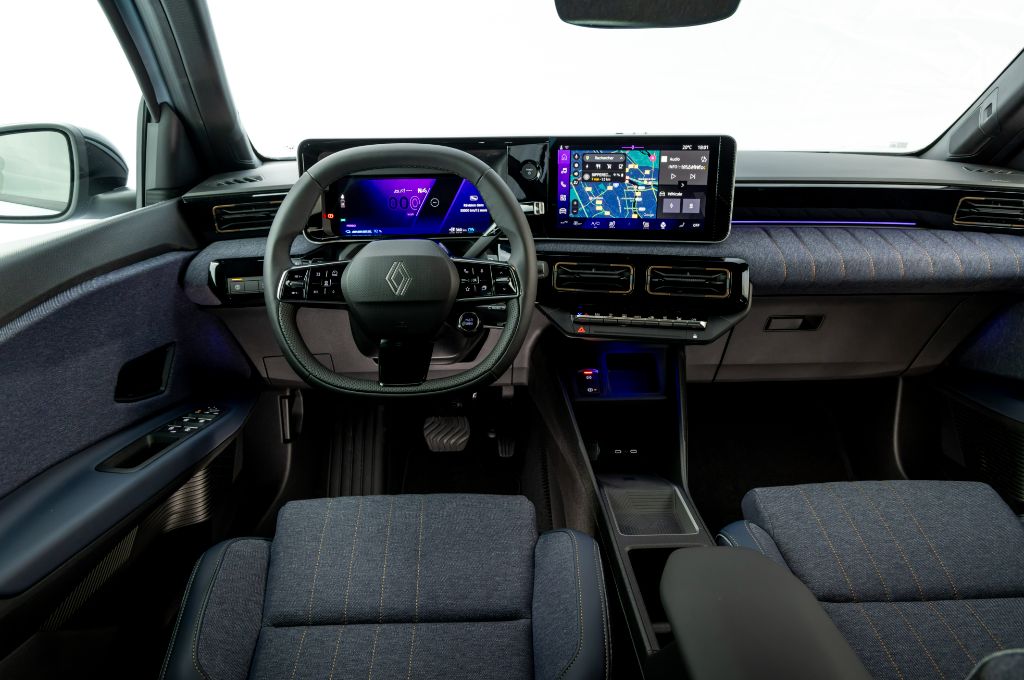
The entry level Renault 4 E-Tech evolution trim gets a 7-inch driver display, but the 10-inch version on higher specs is the only one I’ve experienced, and it's clear and easy to live with. If I’m looking for niggles, the indicator noise is a bit too noisy and clip-cloppy. I don’t mind the noise, just make it a bit quieter, please, Renault!
I'm also slightly sad to see the gear selector here on the steering wheel once again – all a bit too close to the wiper stalk, really – which is one of the few things I don’t love about Renault cars.
As with the Renault 5, there’s a host of possible combinations of colours, trims and wheels and personalisation options – along with a range of 3D printed accessories.
Motors, performance and handling
There’s no four-wheel drive version of the Renault 4, for now, although Renault bosses have told Electrifying that they’re considering it if there’s demand in the future. I reckon that a little, lightweight four-wheel drive Renault 4 would be brilliant, and very in keeping with the original that was often the vehicle of choice for French farmers, so here's hoping...
Anyway, currently it’s front-wheel drive only, with a punchy 150hp electric motor that makes it feel sprightly and responsive yet appropriately moderate. It all just feels very right, with nicely weighted controls, easy to modulate pedals and a nice turn of speed when you want it. Handling is sweet, too, with balanced composure through the corners so that you can enjoy a fun country road with a dab of Sport mode, if you fancy it.
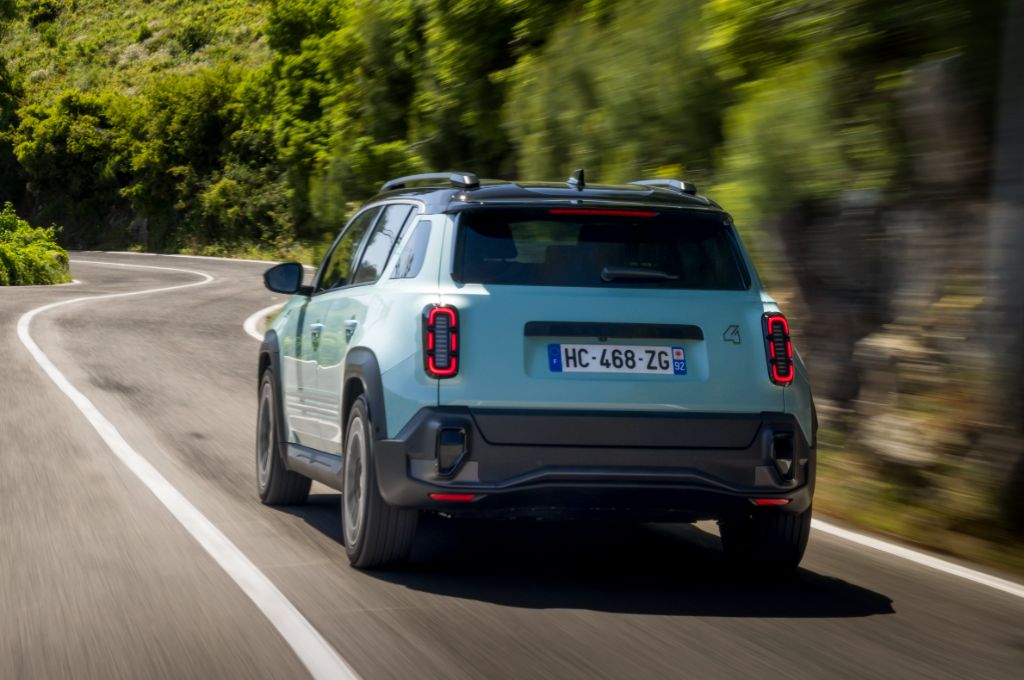
The 4 does have softer suspension than the Renault 5, and it’s a bit taller, so you notice body lean a bit more but it still doesn’t feel wallowy. Ride comfort is well damped enough to take the sting out of most road surfaces, so it’s certainly comfortable enough for an easy life even if you commute on scruffy town roads a lot, but you’ll notice bigger bumps and undulations. A Citroen e-C3 Aircross is more cushy, but the Renault 4 is a bit more fun and just as easy to live with in terms of the way it drives.
The Renault 4 gets a new brake regen system, which offers three levels of regenerative braking, plus a one-pedal mode, all of which is controlled via the paddles on the steering wheel provided you go for mid-spec techno. The top two regen levels are pretty unobtrusive, and all of the modes feel smooth and are easy to get used to. Even the one-pedal mode (which means you don’t need to use the brake pedal at all around town) doesn't feel grabby.
It’s good to be able to twitch the paddles to control the regen, too – rather like the regen we’ve always rated highly on Kia and Hyundai models. It just gives you full control and feels very natural to switch modes on a relevant road.
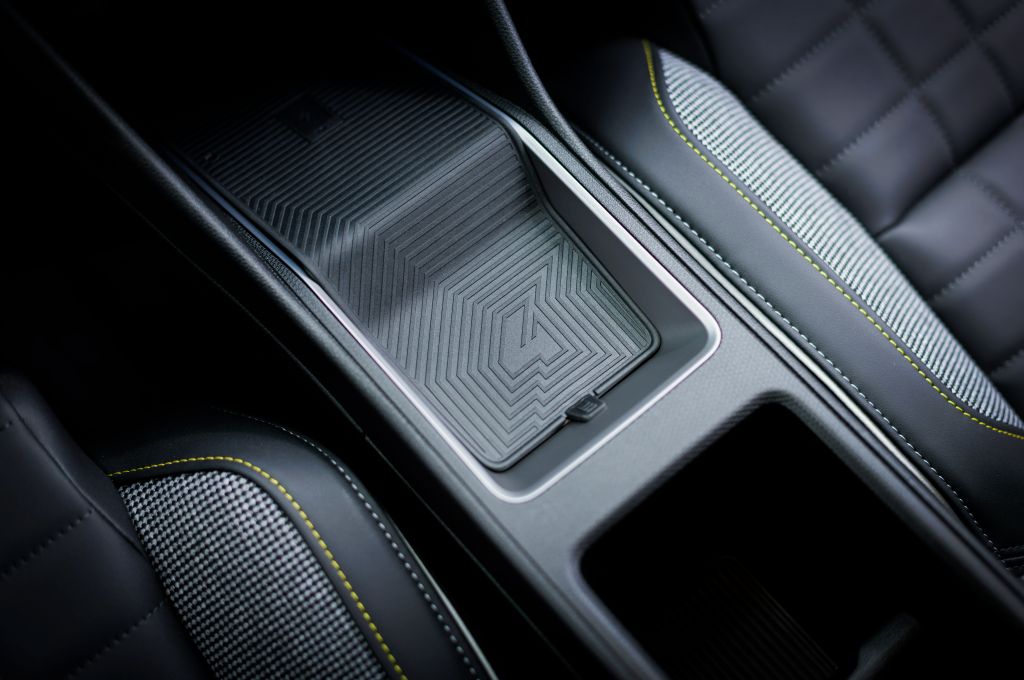
Running costs and pricing
Pricing starts at £26,995 for the entry-level Renault 4 E-Tech evolution model, rising to £28,995 for the techno and £30,995 for the iconic. That’s really competitive with its main rivals, and Renault’s recent track record suggests resale values will be decent, too. PCP is okay - expect to pay around £320- to £380 per month with a £5,000 deposit, over a three year term, but that does vary.
Currently, the Renault 4+ (that's the 52kWh one, as of late 2025) is currently eligible for £3,750 off thanks to the UK's electric car grant – which makes it incredible value. The prices shown on our review don't include the grant deduction, so make sure that you factor it in while the ECG is still applicable.
Equipment levels are good, with a reversing camera ,18-inch alloys, air-con, cruise control and all of that touchscreen infotainment goodness included on the entry-level Renault 4 evolution. Mid-spec techno gets the illuminated Renault 4 grille, which looks brilliant and will be a big reason why many buyers will go for this higher trim, as will the adaptive cruise control. You have to go for top-spec iconic to get heated seats, but Renault will also throw in upgraded upholstery, a heated steering wheel and blind spot warning. Sadly, that scrolling fabric roof isn't expected to become available until spring 2026.
Warranty-wise, it’s three years or 60,000 miles for the car, and eight years or 100,000 miles for the battery. MG, Peugeot, Kia and Hyundai will all do you a longer standard warranty, but Renault’s warranty is still on a par with many others in the industry.
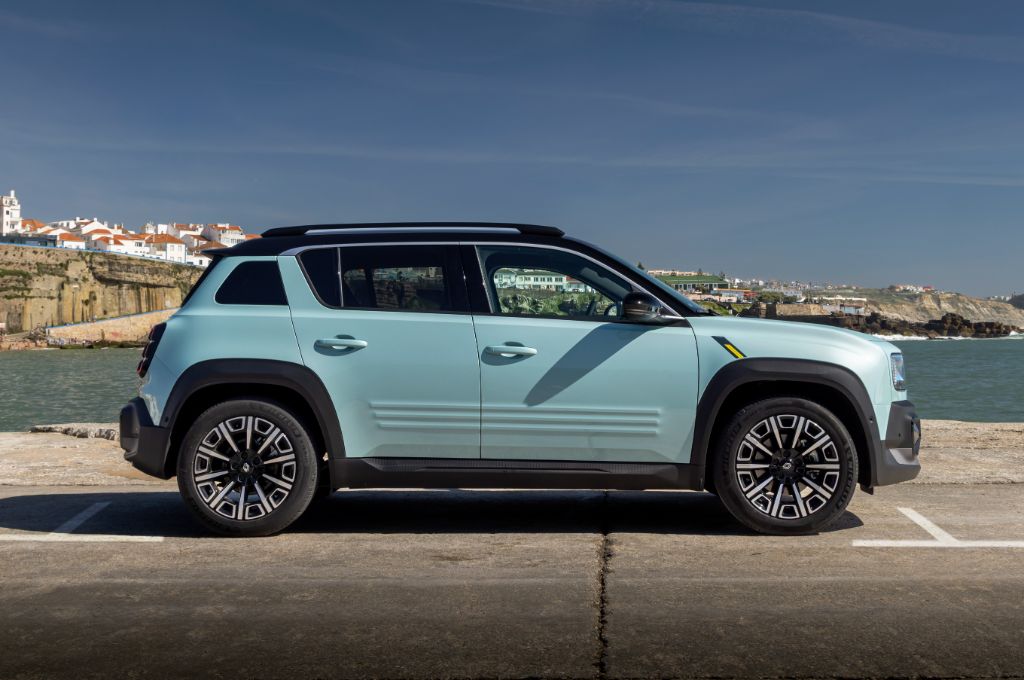
It shouldn’t be too expensive to keep the Renault 4 topped up. A full charge at a home charger will cost around £13 on a standard domestic tariff, or check out our guide to the best home electricity tariffs to see how cheaply you could charge up! You could cut that cost by more than half.
Verdict
Whether you’re swayed by the nostalgic charm or the impressive tech levels, the Renault 4 feels more loveable than many rivals. For that alone, it deserves credit. I must say that I was a bit whelmed by the rear passenger space, but this is a compact car that’s smaller than a Renault Captur, and it’s still going to be a really useful, easy living thing.
Other than that, I love it. The interior’s nice, it drives very sweetly and it’s good value for money – even if it frustrates the hell out of me that you have to go for the top spec to get heated seats. Just offer them as an affordable option on the techno, Renault! You know it makes sense.
The Renault 4 E-Tech is a great all-rounder, and while I’m not quite sure it’s got the same wow factor that the Renault 5 has, it’s still a car that ticks all the sensible boxes while also having a lots of 'just for fun' appeal. And we're all for that.





